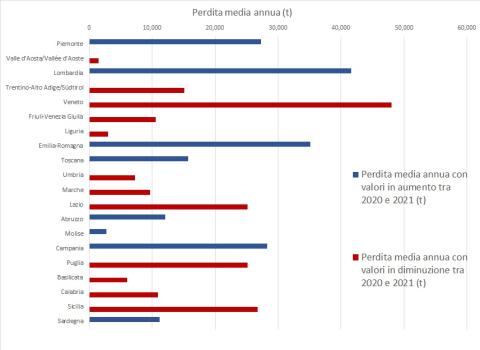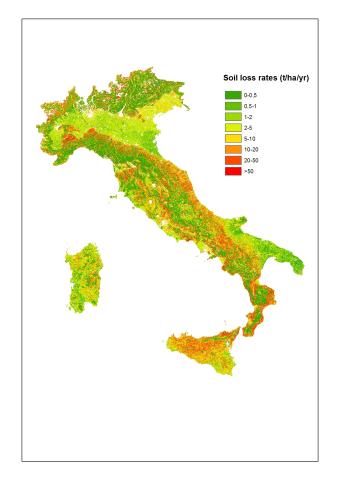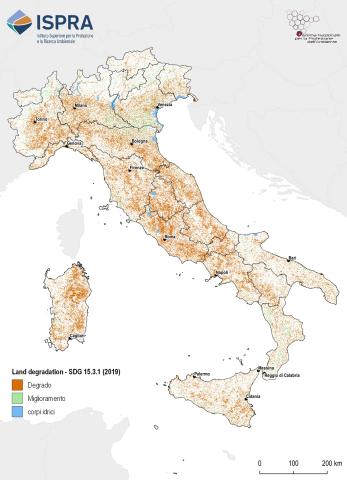SOIL ORGANIC CARBON AND IMPACT OF SOIL CONSUMPTION
Data aggiornamento scheda:

The sequestration and storage of carbon constitute a regulatory service provided by various terrestrial and marine ecosystems due to their ability to capture greenhouse gases. This capacity varies in magnitude depending on the natural state of the ecosystem considered. This service contributes to global climate regulation and plays a crucial role in climate change mitigation and adaptation strategies. Among all terrestrial ecosystems, natural and semi-natural forests have the highest carbon sequestration potential. In the soil pool, in particular, organic carbon accounts for approximately 60% of the organic matter present and performs an essential positive function on many soil properties. Based on the mapping carried out within the GSP (Global Soil Partnership - GSOC map) for the soil reservoir, data from the National Inventory of Forests and Carbon Reservoirs (INFC), and information on land cover and soil consumption from ISPRA cartography, this indicator provides an estimate of the quantities of Soil Organic Carbon contained in the four pools of Italian soils and the variation determined by soil consumption during the periods 2012-2020 and 2012-2021. The estimated stock for 2012 was over 2.6 billion tons, a value that by 2021 had been reduced by over 3.2 million tons, with a continuous decline and an increasing annual loss rate in eight out of twenty regions.
WATER EROSION
Data aggiornamento scheda:

The indicator estimates soil loss due to water erosion, expressed in tonnes per hectare per year.
According to European estimates, Italy loses on average 8.77 tonnes/hectare/year, significantly higher than the European average.
SOIL DEGRADATION
Data aggiornamento scheda:

Soil degradation refers to the reduction in the biological productivity of soil resources. This process is often intrinsically linked to biodiversity loss and the impacts of climate change. Assessing soil degradation requires considering multiple interdependent factors, each contributing differently to the phenomenon.
In recent years, Italy has participated in the pilot project on Land Degradation Neutrality (LDN), promoted by the United Nations Convention to Combat Desertification (UNCCD), and in the LDN Target Setting Programme, which supports countries in identifying voluntary LDN targets and defining associated measures to achieve Sustainable Development Goal (SDG) 15.3. This goal is monitored through the "Proportion of degraded land over total land area" (SDG Indicator 15.3.1).
For the assessment of this indicator in Italy, three sub-indicators proposed by UNCCD under the LDN framework have been adopted:
- Land cover change
- Soil productivity index
- Soil organic carbon content
Additionally, further indices and parameters relevant to the Italian context and available at the national level have been considered. The results show that in 2019, the proportion of degraded land in Italy, excluding water bodies, was 17.4%, according to the UNCCD methodology. Furthermore, nearly 56,000 km² (approximately 18.5% of the national territory) experienced increased degradation between 2006 and 2019.